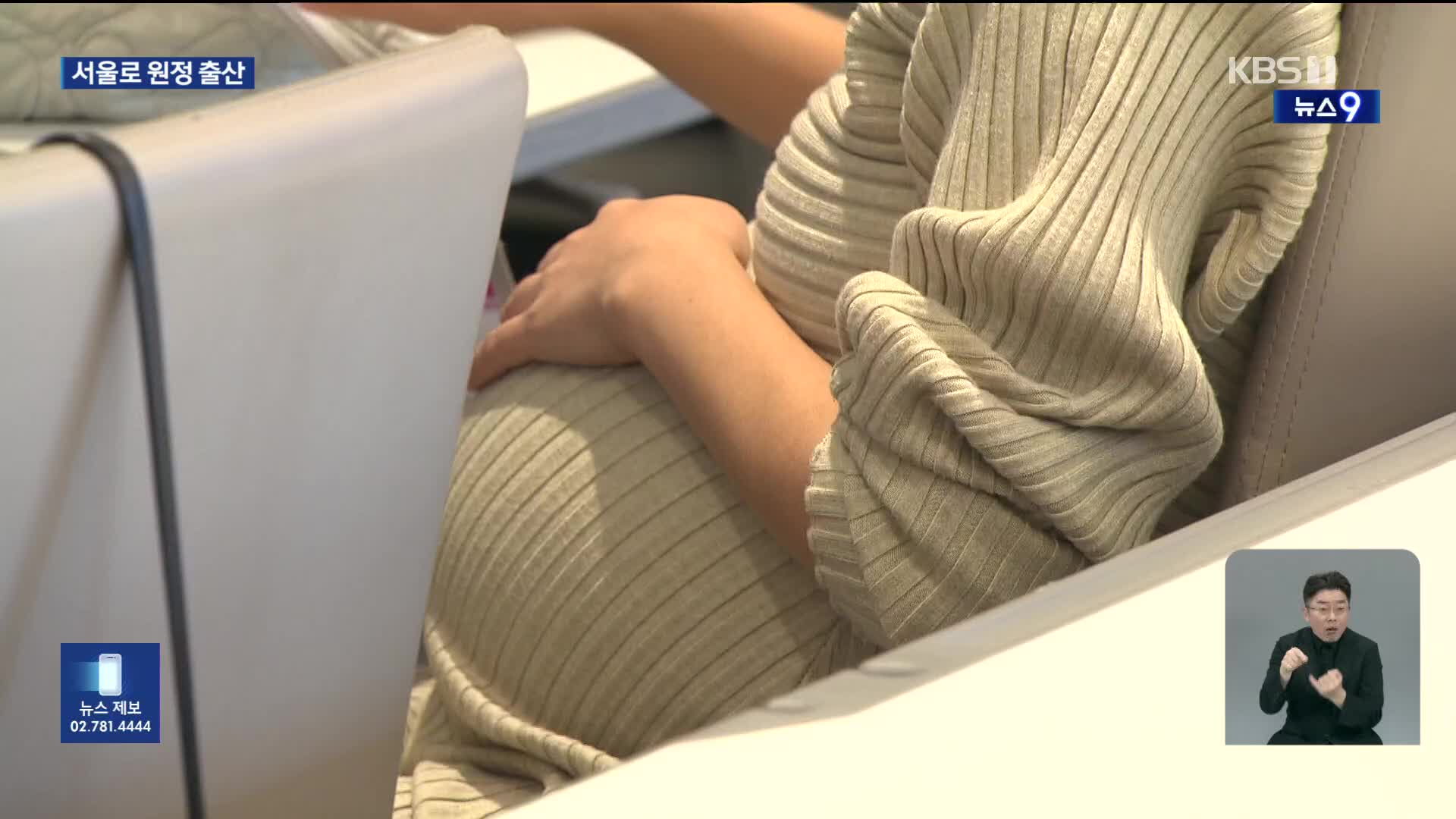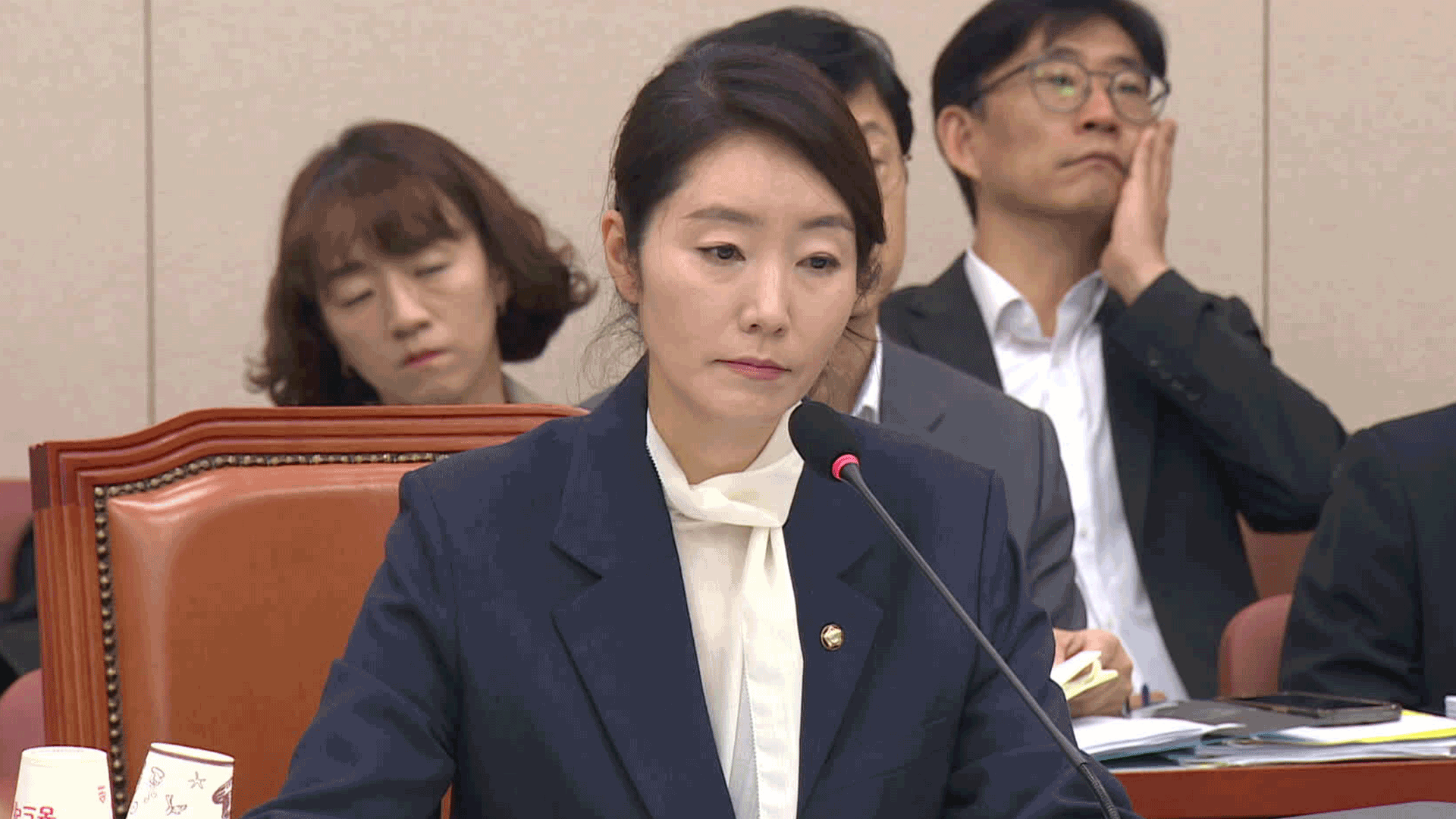High-risk pregnant women travel to Seoul for treatment; number of obstetricians rapidly decreasing
입력 2024.10.13 (00:13)
읽어주기 기능은 크롬기반의
브라우저에서만 사용하실 수 있습니다.
[Anchor]
The number of hospitals capable of delivering babies is gradually decreasing due to the phenomenon of avoiding obstetrics in medical schools.
This is particularly severe in rural areas.
High-risk pregnant women, caused by factors such as infertility and advanced age, are forced to travel to the metropolitan area for treatment and delivery.
Reporter Hong Jin-ah has the story.
[Report]
Kim Bo-yoon and her husband, who had triplets through in vitro fertilization.
They live in Namwon, Jeollabuk-do Province, but had to travel to Gwangju University Hospital, an hour away, due to the lack of nearby delivery hospitals.
However, when preterm labor symptoms appeared three weeks before the due date, they had to move to a hospital in Seoul once again.
[Kim Bo-yoon/Triplet mother: "They said they cannot handle all three (triplets). There is a shortage of pediatricians as well as neonatal intensive care unit beds…."]
Although the number of high-risk pregnant women is increasing due to advanced maternal age and infertility treatments, the reality is that there is a shortage of both hospitals and doctors outside the metropolitan area.
[Jo Min-seong/Expectant Mother in 40s/Resident of Gangwon-do: "I think it would be more difficult for high-risk pregnant women in Gangwon-do compared to here (the metropolitan area). I feel that the system and facilities in Ilsan are more reliable…."]
In areas with weak delivery capabilities, such as rural and fishing villages, support for accommodations linked to urban hospitals and a cooperative medical system between hospitals and clinics are being established as alternatives.
Securing obstetricians, which is decreasing, is also urgent.
Among 128 obstetrics professors from 40 medical schools nationwide, 62% are concentrated in Seoul and Gyeonggi Province, and there are only 12 obstetric residents training nationwide before becoming professors.
This is less than one-third of the number three years ago.
The low number of deliveries and the risks of medical accidents and lawsuits are the main causes.
[Oh Soo-young/Chair of the Delivery Infrastructure Task Force, Korean Society of Obstetrics and Gynecology/Professor at Samsung Medical Center: "It is an ultra-crisis situation. The biggest reason is actually the fear of medical lawsuits. First of all, the burden regarding legal aspects needs to be alleviated."]
The government raised the delivery fee last year and decided to support up to 30 million won for no-fault delivery accidents, but there are calls for more groundbreaking measures to reverse the trend of doctors avoiding obstetrics.
This is KBS News, Hong Jin-ah.
The number of hospitals capable of delivering babies is gradually decreasing due to the phenomenon of avoiding obstetrics in medical schools.
This is particularly severe in rural areas.
High-risk pregnant women, caused by factors such as infertility and advanced age, are forced to travel to the metropolitan area for treatment and delivery.
Reporter Hong Jin-ah has the story.
[Report]
Kim Bo-yoon and her husband, who had triplets through in vitro fertilization.
They live in Namwon, Jeollabuk-do Province, but had to travel to Gwangju University Hospital, an hour away, due to the lack of nearby delivery hospitals.
However, when preterm labor symptoms appeared three weeks before the due date, they had to move to a hospital in Seoul once again.
[Kim Bo-yoon/Triplet mother: "They said they cannot handle all three (triplets). There is a shortage of pediatricians as well as neonatal intensive care unit beds…."]
Although the number of high-risk pregnant women is increasing due to advanced maternal age and infertility treatments, the reality is that there is a shortage of both hospitals and doctors outside the metropolitan area.
[Jo Min-seong/Expectant Mother in 40s/Resident of Gangwon-do: "I think it would be more difficult for high-risk pregnant women in Gangwon-do compared to here (the metropolitan area). I feel that the system and facilities in Ilsan are more reliable…."]
In areas with weak delivery capabilities, such as rural and fishing villages, support for accommodations linked to urban hospitals and a cooperative medical system between hospitals and clinics are being established as alternatives.
Securing obstetricians, which is decreasing, is also urgent.
Among 128 obstetrics professors from 40 medical schools nationwide, 62% are concentrated in Seoul and Gyeonggi Province, and there are only 12 obstetric residents training nationwide before becoming professors.
This is less than one-third of the number three years ago.
The low number of deliveries and the risks of medical accidents and lawsuits are the main causes.
[Oh Soo-young/Chair of the Delivery Infrastructure Task Force, Korean Society of Obstetrics and Gynecology/Professor at Samsung Medical Center: "It is an ultra-crisis situation. The biggest reason is actually the fear of medical lawsuits. First of all, the burden regarding legal aspects needs to be alleviated."]
The government raised the delivery fee last year and decided to support up to 30 million won for no-fault delivery accidents, but there are calls for more groundbreaking measures to reverse the trend of doctors avoiding obstetrics.
This is KBS News, Hong Jin-ah.
■ 제보하기
▷ 카카오톡 : 'KBS제보' 검색, 채널 추가
▷ 전화 : 02-781-1234, 4444
▷ 이메일 : kbs1234@kbs.co.kr
▷ 유튜브, 네이버, 카카오에서도 KBS뉴스를 구독해주세요!
- High-risk pregnant women travel to Seoul for treatment; number of obstetricians rapidly decreasing
-
- 입력 2024-10-13 00:13:35

[Anchor]
The number of hospitals capable of delivering babies is gradually decreasing due to the phenomenon of avoiding obstetrics in medical schools.
This is particularly severe in rural areas.
High-risk pregnant women, caused by factors such as infertility and advanced age, are forced to travel to the metropolitan area for treatment and delivery.
Reporter Hong Jin-ah has the story.
[Report]
Kim Bo-yoon and her husband, who had triplets through in vitro fertilization.
They live in Namwon, Jeollabuk-do Province, but had to travel to Gwangju University Hospital, an hour away, due to the lack of nearby delivery hospitals.
However, when preterm labor symptoms appeared three weeks before the due date, they had to move to a hospital in Seoul once again.
[Kim Bo-yoon/Triplet mother: "They said they cannot handle all three (triplets). There is a shortage of pediatricians as well as neonatal intensive care unit beds…."]
Although the number of high-risk pregnant women is increasing due to advanced maternal age and infertility treatments, the reality is that there is a shortage of both hospitals and doctors outside the metropolitan area.
[Jo Min-seong/Expectant Mother in 40s/Resident of Gangwon-do: "I think it would be more difficult for high-risk pregnant women in Gangwon-do compared to here (the metropolitan area). I feel that the system and facilities in Ilsan are more reliable…."]
In areas with weak delivery capabilities, such as rural and fishing villages, support for accommodations linked to urban hospitals and a cooperative medical system between hospitals and clinics are being established as alternatives.
Securing obstetricians, which is decreasing, is also urgent.
Among 128 obstetrics professors from 40 medical schools nationwide, 62% are concentrated in Seoul and Gyeonggi Province, and there are only 12 obstetric residents training nationwide before becoming professors.
This is less than one-third of the number three years ago.
The low number of deliveries and the risks of medical accidents and lawsuits are the main causes.
[Oh Soo-young/Chair of the Delivery Infrastructure Task Force, Korean Society of Obstetrics and Gynecology/Professor at Samsung Medical Center: "It is an ultra-crisis situation. The biggest reason is actually the fear of medical lawsuits. First of all, the burden regarding legal aspects needs to be alleviated."]
The government raised the delivery fee last year and decided to support up to 30 million won for no-fault delivery accidents, but there are calls for more groundbreaking measures to reverse the trend of doctors avoiding obstetrics.
This is KBS News, Hong Jin-ah.
The number of hospitals capable of delivering babies is gradually decreasing due to the phenomenon of avoiding obstetrics in medical schools.
This is particularly severe in rural areas.
High-risk pregnant women, caused by factors such as infertility and advanced age, are forced to travel to the metropolitan area for treatment and delivery.
Reporter Hong Jin-ah has the story.
[Report]
Kim Bo-yoon and her husband, who had triplets through in vitro fertilization.
They live in Namwon, Jeollabuk-do Province, but had to travel to Gwangju University Hospital, an hour away, due to the lack of nearby delivery hospitals.
However, when preterm labor symptoms appeared three weeks before the due date, they had to move to a hospital in Seoul once again.
[Kim Bo-yoon/Triplet mother: "They said they cannot handle all three (triplets). There is a shortage of pediatricians as well as neonatal intensive care unit beds…."]
Although the number of high-risk pregnant women is increasing due to advanced maternal age and infertility treatments, the reality is that there is a shortage of both hospitals and doctors outside the metropolitan area.
[Jo Min-seong/Expectant Mother in 40s/Resident of Gangwon-do: "I think it would be more difficult for high-risk pregnant women in Gangwon-do compared to here (the metropolitan area). I feel that the system and facilities in Ilsan are more reliable…."]
In areas with weak delivery capabilities, such as rural and fishing villages, support for accommodations linked to urban hospitals and a cooperative medical system between hospitals and clinics are being established as alternatives.
Securing obstetricians, which is decreasing, is also urgent.
Among 128 obstetrics professors from 40 medical schools nationwide, 62% are concentrated in Seoul and Gyeonggi Province, and there are only 12 obstetric residents training nationwide before becoming professors.
This is less than one-third of the number three years ago.
The low number of deliveries and the risks of medical accidents and lawsuits are the main causes.
[Oh Soo-young/Chair of the Delivery Infrastructure Task Force, Korean Society of Obstetrics and Gynecology/Professor at Samsung Medical Center: "It is an ultra-crisis situation. The biggest reason is actually the fear of medical lawsuits. First of all, the burden regarding legal aspects needs to be alleviated."]
The government raised the delivery fee last year and decided to support up to 30 million won for no-fault delivery accidents, but there are calls for more groundbreaking measures to reverse the trend of doctors avoiding obstetrics.
This is KBS News, Hong Jin-ah.
-
-

홍진아 기자 gina@kbs.co.kr
홍진아 기자의 기사 모음
-
이 기사가 좋으셨다면
-
좋아요
0
-
응원해요
0
-
후속 원해요
0











![[단독] “윤석열·김용현 등 공모해 군사상 이익 해쳐”…외환죄 대신 일반이적죄 적용](/data/layer/904/2025/07/20250714_3VTJV3.jpg)



이 기사에 대한 의견을 남겨주세요.